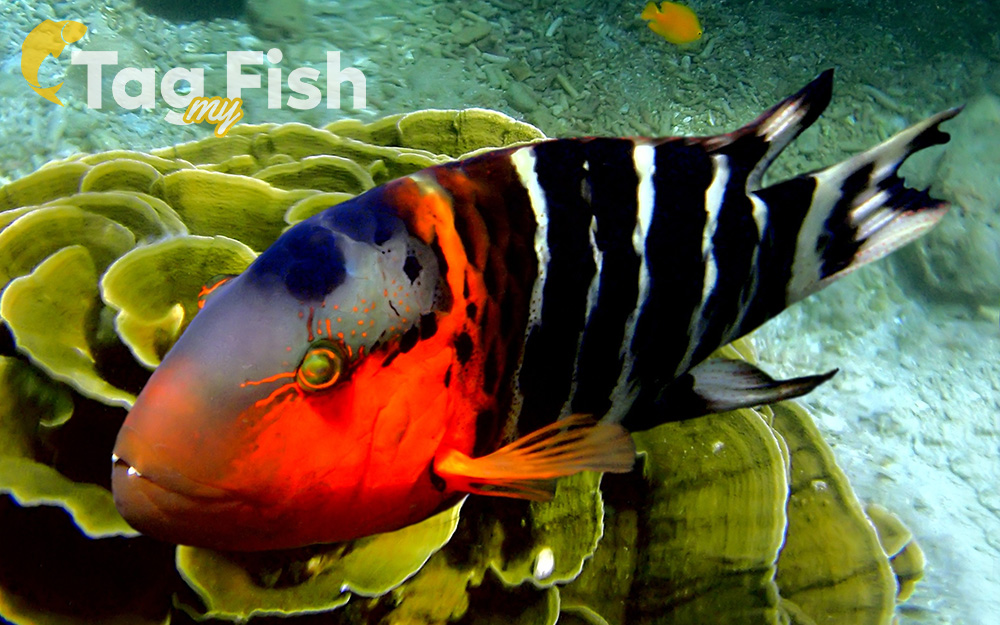Whitebarred wrasse
(Cheilinus quinquecinctus)

Classification
General data
Western Indian Ocean: restricted to the Red Sea and the Gulf of Aden.
Max length: 35 cm SL
Dorsal spines (total): 9; Dorsal soft rays (total): 10; Anal spines: 3; Anal soft rays: 8.
This species is distinguished by the following characters: D IX, 10; gill rakers 13-16 (usually 13 or 14); body depth 2.3-2.6 in SL; caudal-fin rays are free of membrane posteriorly in adults.
Colouration: juveniles brown, usually with five white bars across the body, first bar broadest and brightest, bar on midside of abdomen when present indistinct, fifth bar anteriorly on caudal peduncle and faint; all bars except the bar on midside of abdomen extend onto dorsal and anal fins; on nape and interorbital space are three short faint bars; from eye across preopercle with a short oblique white band; base of caudal fin with a narrow white bar; anterior in dorsal fin with a large dark blue spot, surrounded with orange dorsally; subadults and females have similar white bars as juveniles but the second bar becoming distinct and nearly reaching dorsal-fin base; scales edged with black on postorbital head, dorsum, and ventrally on body; humeral area with three (rarely two) irregular, dark blue or black marks; postorbital head and anterior body are suffused with orange; caudal fin is broadly white basally, followed by a slightly broader black zone, outer fifth pale grey; males with much more black pigment on body scales and posteriorly on head, and the suffusion of orange becoming bright orange-red area on the postorbital head, anterior of body, abdomen, and pectoral-fin base, with color extending posteriorly nearly to second white bar, enclosing first bar in large males; head brown with a large orangish area anteriorly around eye, on cheek and most of snout; caudal fin same as in females.











